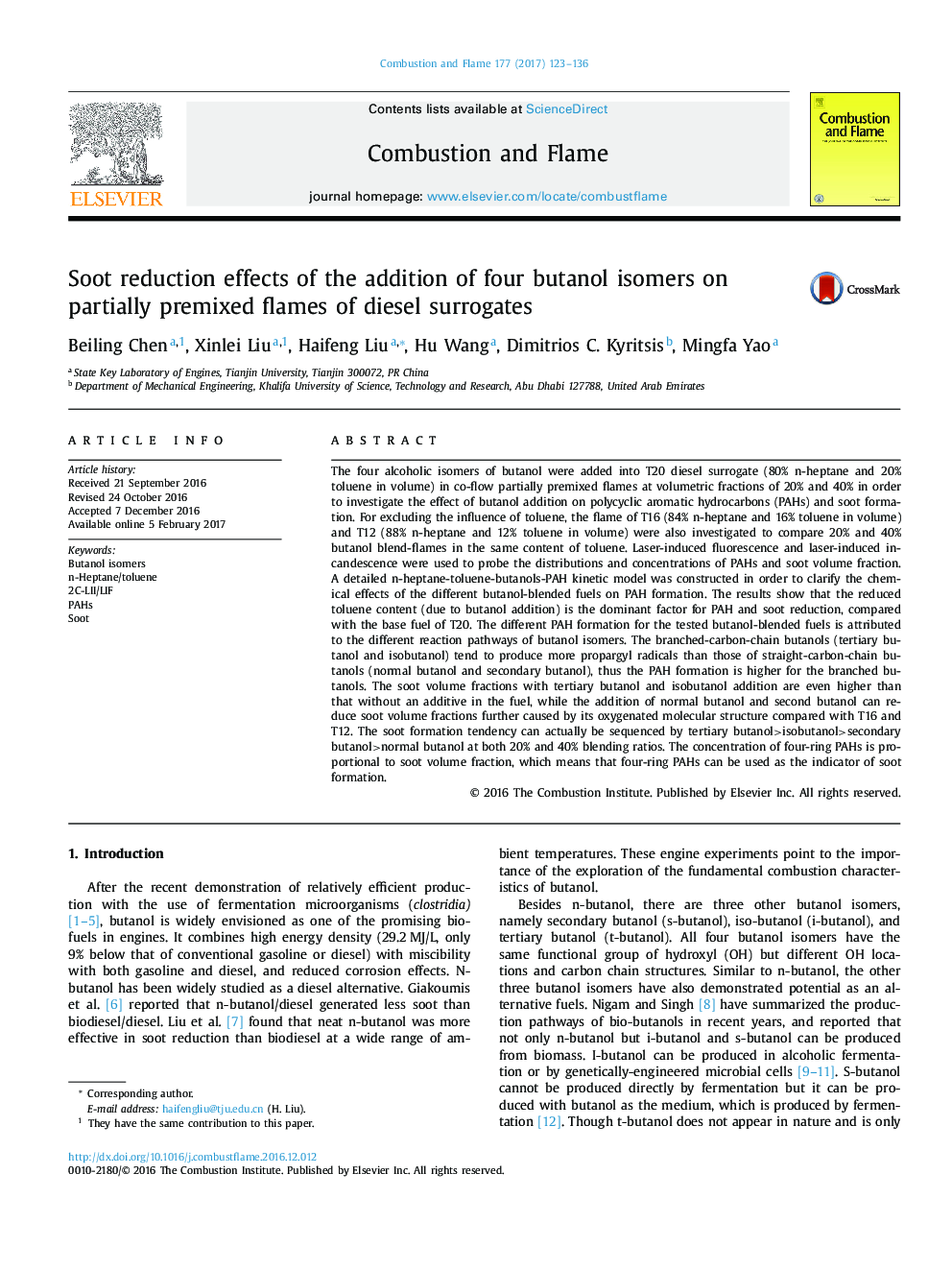| کد مقاله | کد نشریه | سال انتشار | مقاله انگلیسی | نسخه تمام متن |
|---|---|---|---|---|
| 6468541 | 1423560 | 2017 | 14 صفحه PDF | دانلود رایگان |
The four alcoholic isomers of butanol were added into T20 diesel surrogate (80% n-heptane and 20% toluene in volume) in co-flow partially premixed flames at volumetric fractions of 20% and 40% in order to investigate the effect of butanol addition on polycyclic aromatic hydrocarbons (PAHs) and soot formation. For excluding the influence of toluene, the flame of T16 (84% n-heptane and 16% toluene in volume) and T12 (88% n-heptane and 12% toluene in volume) were also investigated to compare 20% and 40% butanol blend-flames in the same content of toluene. Laser-induced fluorescence and laser-induced incandescence were used to probe the distributions and concentrations of PAHs and soot volume fraction. A detailed n-heptane-toluene-butanols-PAH kinetic model was constructed in order to clarify the chemical effects of the different butanol-blended fuels on PAH formation. The results show that the reduced toluene content (due to butanol addition) is the dominant factor for PAH and soot reduction, compared with the base fuel of T20. The different PAH formation for the tested butanol-blended fuels is attributed to the different reaction pathways of butanol isomers. The branched-carbon-chain butanols (tertiary butanol and isobutanol) tend to produce more propargyl radicals than those of straight-carbon-chain butanols (normal butanol and secondary butanol), thus the PAH formation is higher for the branched butanols. The soot volume fractions with tertiary butanol and isobutanol addition are even higher than that without an additive in the fuel, while the addition of normal butanol and second butanol can reduce soot volume fractions further caused by its oxygenated molecular structure compared with T16 and T12. The soot formation tendency can actually be sequenced by tertiary butanol>isobutanol>secondary butanol>normal butanol at both 20% and 40% blending ratios. The concentration of four-ring PAHs is proportional to soot volume fraction, which means that four-ring PAHs can be used as the indicator of soot formation.
Journal: Combustion and Flame - Volume 177, March 2017, Pages 123-136
